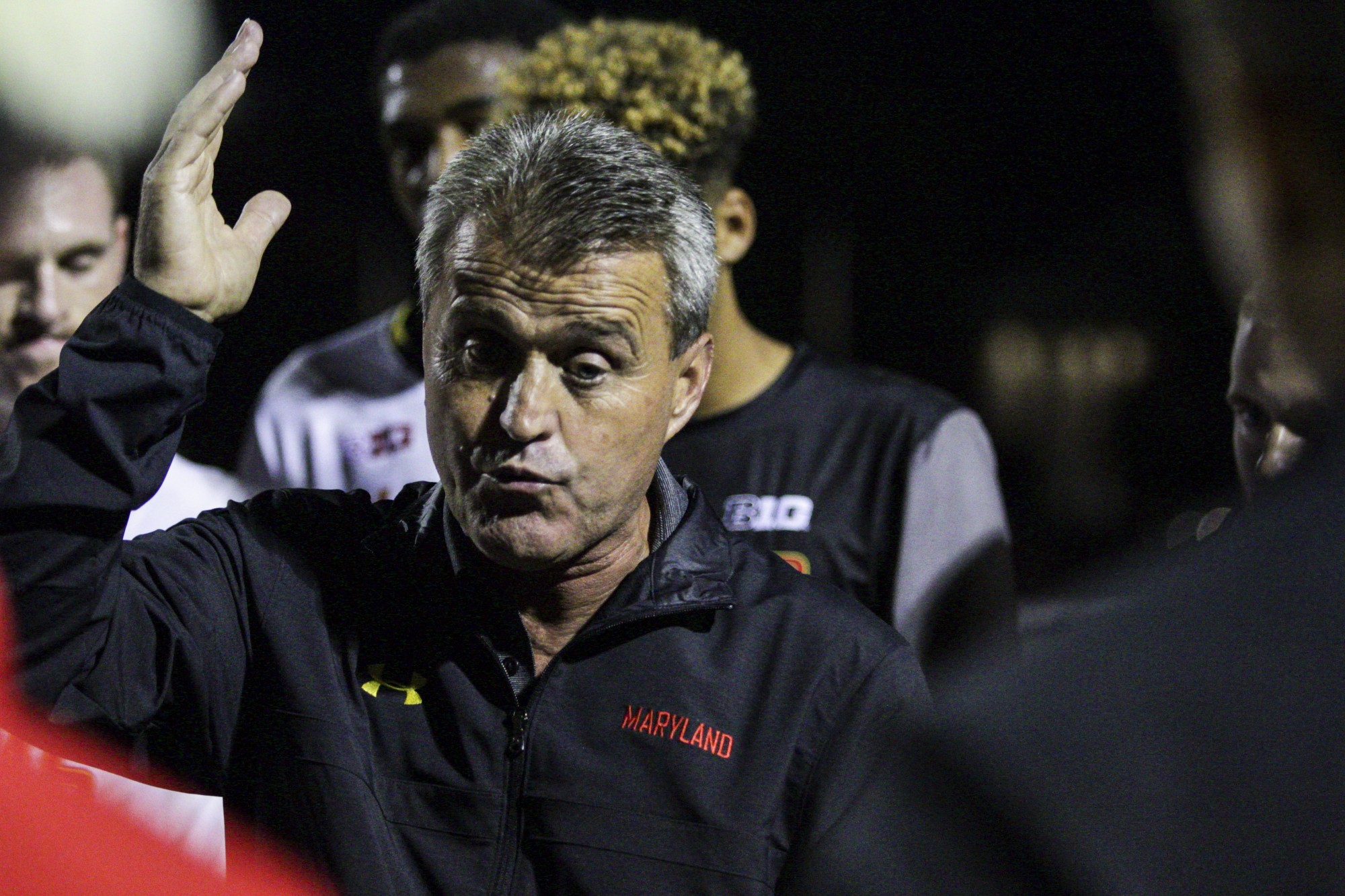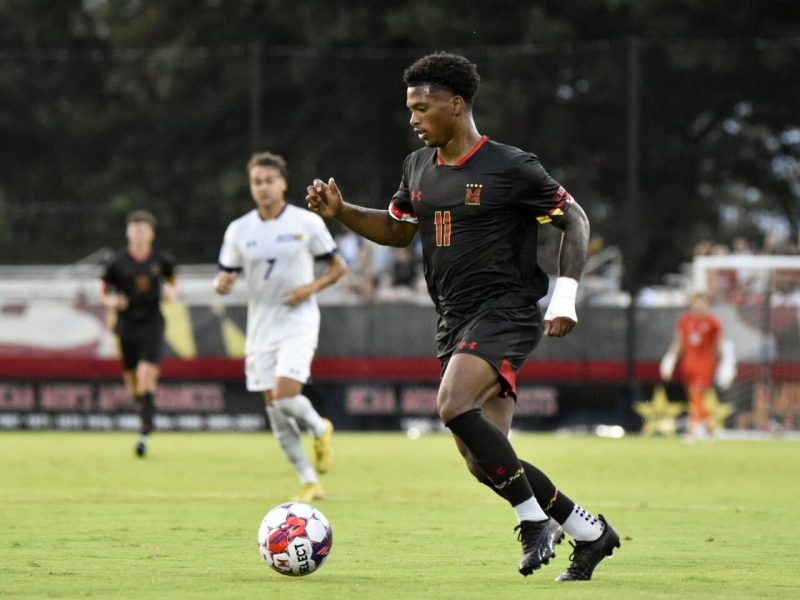The Maryland men’s soccer team came to an agreement. After a scoreless tie with Indiana, the group accepted they would learn from the disappointing performance.
“I’m just going to keep reiterating the fact that we’re going to build on this and file it and see what tomorrow has in store for us,” defender George Campbell said.
But the No. 5 Terps (4-0-1, 0-0-1 Big Ten) had just three days between Friday’s conference-opener with the Hoosiers to recover, review and try to correct any mistakes before Tuesday’s game against Rutgers (1-3-1, 0-1-0).
The quick turnaround between games is a prime reason coach Sasho Cirovski wants to spread the season out across the fall and spring semesters.
“It’s something that must happen,” Cirovski said. “The momentum has grown, but it’s a very slow journey.”
Maryland’s break between Indiana and Rutgers is relatively long compared the rest of its schedule. The Terps began their season Aug. 25 in Santa Clara, California, and played Hofstra at Ludwig Field three days later.
Later this month, the Terps will visit UMBC on Sep. 26, host Northwestern on Sep. 29 and travel to Connecticut on Oct. 2 — a three-game, three-city, eight-day stretch that is only slightly more intense than most schedules the Terps and other college teams play.
“It’s not fair, to an extent,” midfielder Eryk Williamson said. “We don’t have the opportunity to get better; we don’t get to get a lift in during the week.”
Forward Eric Matzelevich, who trained in England with the U-18 Reading FC Youth Academy as a high schooler, described the college season as a grind between the academic and athletic demands.
Splitting the season across the full academic year would ease some of those pains, Cirovski said, vastly cutting down the number of classes players currently miss due to midweek games.
“What we want are all good things,” the 25th-year head coach said. “We want a better student-athlete experience for soccer players. The season in the fall is way too compact.”
A two-semester schedule would more closely mirror the pacing of professional soccer calendars and would allow for increased training and player development, Cirovski said.
Cirovski has been leading a public campaign to split the season since last year, but the ideas have been discussed since at least 2014.
Golf, rowing and tennis are NCAA sports with schedules stretching about as long as Cirovski’s proposed men’s soccer change. Meanwhile, sports like track-and-field (indoor and outdoor) and volleyball (indoor and beach) feature athletes frequently participating in two seasons per academic year.
“It makes sense from an academic balance experience, [for] physical rest and recovery — it makes sense,” Cirovski said. “It’s something that I will not give up on, and this will happen under my watch.”



